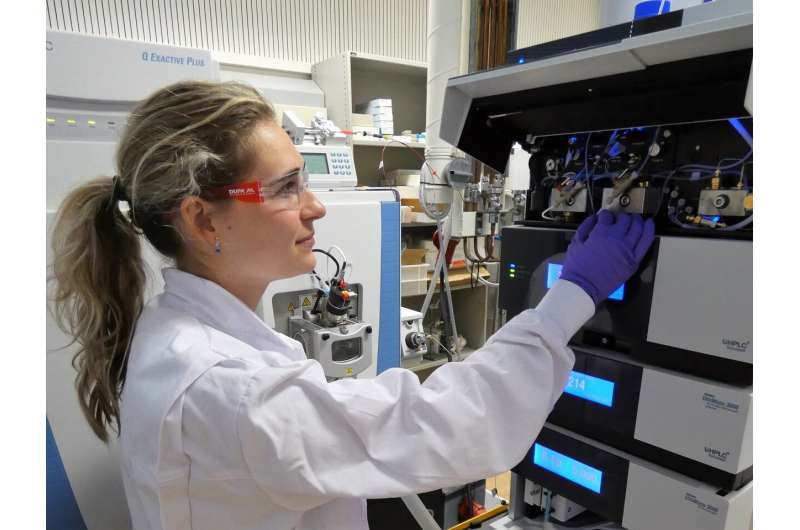Blood of drug users can reveal origin of drug

The opioid fentanyl is not only used in medical practice as a painkiller, but is also a popular recreational drug. In the United States in particular, fentanyl plays an important role in the opioid crisis that claims many victims every day. UvA chemists have now shown, in close cooperation with the Netherlands Organisation for Applied Scientific Research (TNO), that it should be possible to determine the origin of the drug by analyzing blood samples of users.
It was already possible to chemically fingerprint fentanyl as an intact substance. Ph.D. candidate Mirjam de Bruin-Hoegée explains: "By comparing the analysis results of different drug samples, you can investigate where a batch of drugs originates from. You can also determine to what extent the drugs someone is carrying with them, correspond to the products of certain dealers and producers. Several features can help to determine this, including certain chemical impurities in the drugs that relate to the production method applied." But this analysis of drug samples is of limited value when people die or almost die of an overdose and no traces of the drug itself can be found.
Blood as an indicator
De Bruin-Hoegée's research has now shown that it should in principle be possible to determine the production process of the drug from the blood of users. She determined which of the impurities are the best indicators of the origin of fentanyl and which chemical analysis technique is best suited to determine this. She did this in the lab using human liver microsomes. These 'micro-organs' provide a representative picture of fentanyl metabolism in the human body. The next step would be to investigate real forensic samples, such as blood from overdose victims.
"It is usually quite challenging to even detect traces of drugs in someone's blood. But with the help of this research and the use of increasingly sensitive analytical techniques, it will soon be possible to not only detect those traces but also determine the production process of the drug used based on metabolites and impurities," says De Bruin-Hoegée.
The research is part of the FACING project, a collaboration between the Van 't Hoff Institute for Molecular Sciences (HIMS) of the University of Amsterdam and TNO Defence, Safety & Security. The project is funded by the DO-AIO fund of the Ministry of Defence and aims to develop advanced techniques for the analytical profiling of substances used as chemical weapons in wars and terrorist attacks.
More information: Mirjam de Bruin-Hoegée et al, Chemical attribution of fentanyl: The effect of human metabolism, Forensic Chemistry (2021). DOI: 10.1016/j.forc.2021.100330
Provided by University of Amsterdam



















